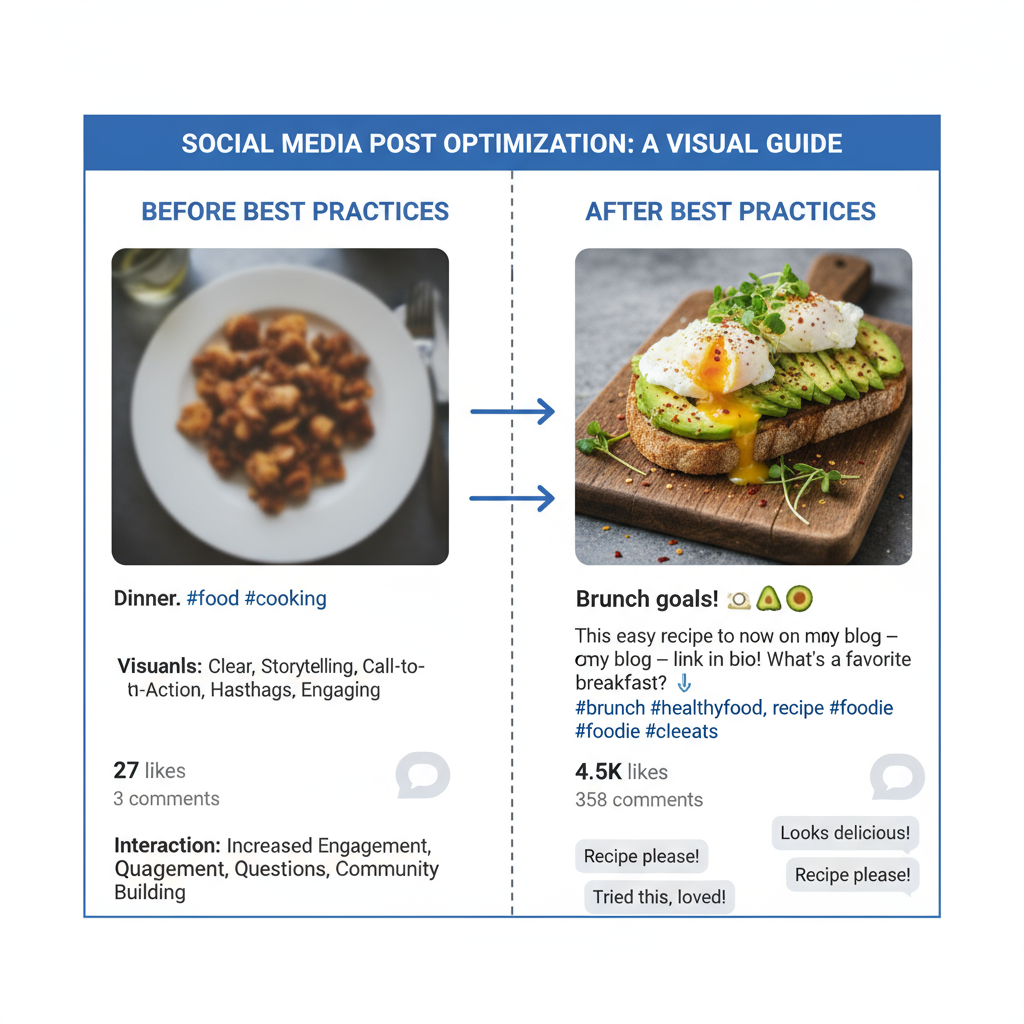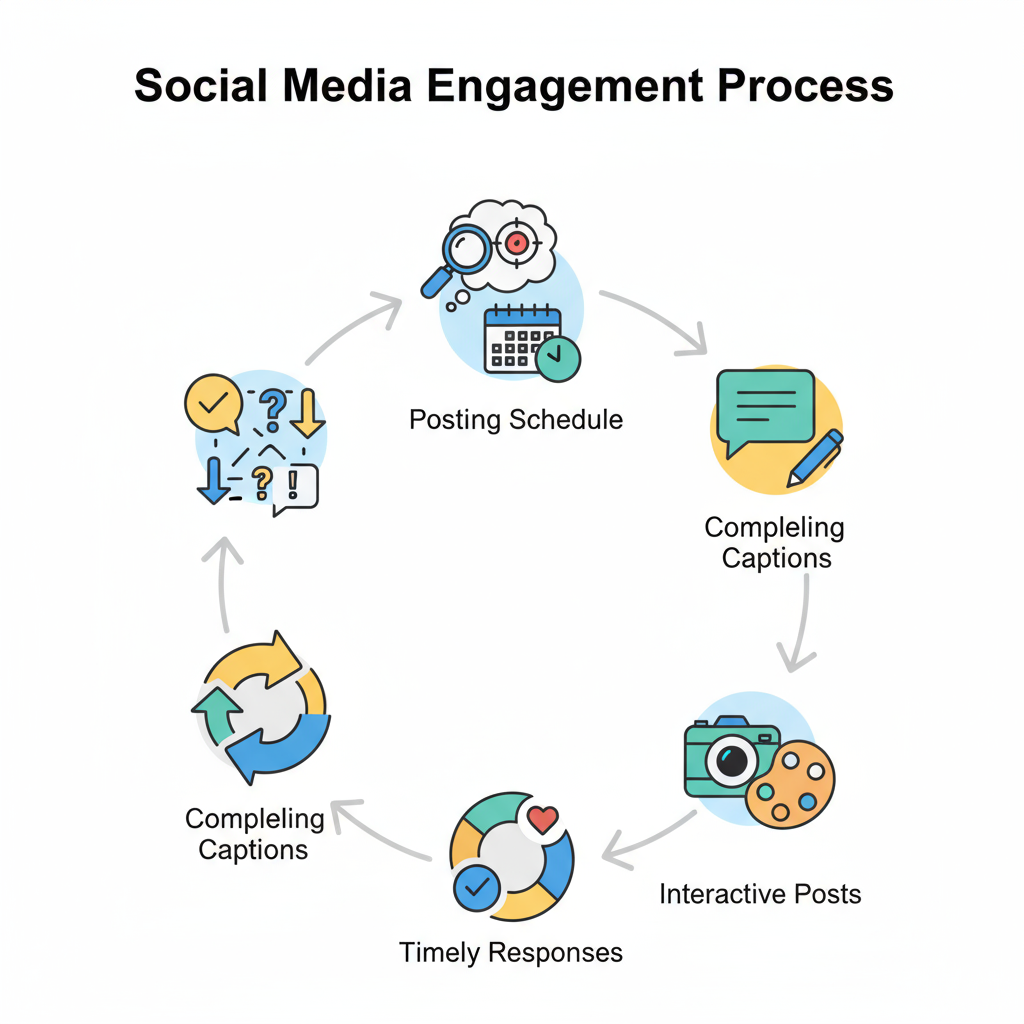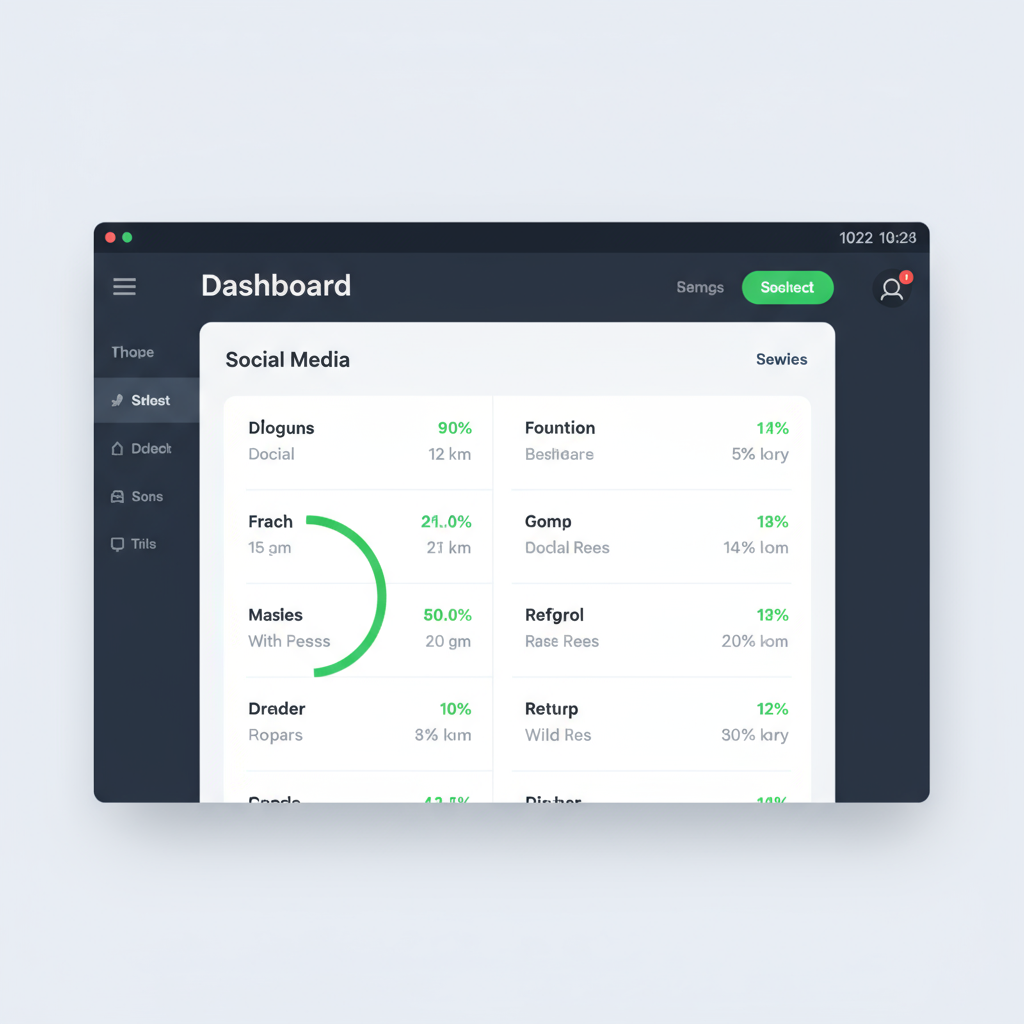Best Practices for Social Media Engagement Strategies
Learn proven strategies to boost social media engagement through audience insights, consistent posting, interactive content, and compelling CTAs.

Best Practices for Social Media Engagement Strategies
Social media engagement is more than a vanity metric—it's the measurable, authentic connection between your audience and your brand. It’s reflected in how people interact with your content, whether through likes, comments, shares, or saves. The stronger the engagement, the more your content is amplified across networks, leading to greater visibility, stronger relationships, and higher conversions.

In this comprehensive guide, we’ll explore the best practices for social media engagement to help you maximize reach, foster community, and drive meaningful interactions with your target audience.
---
What is Social Media Engagement?
Social media engagement refers to the actions users take to interact with and respond to your content. Common engagement metrics include:
- Likes – Quick approval or interest indicator.
- Comments – Signals deeper interaction and conversation.
- Shares – Distributes your content to wider audiences.
- Saves – Marks lasting value or reference intent.
These metrics collectively inform social platform algorithms about content relevance, influencing how often your posts are shown in user feeds.
| Metric | What It Measures | Why It Matters |
|---|---|---|
| Likes | Instant user approval | Boosts visibility in feeds |
| Comments | User engagement depth | Encourages conversations |
| Shares | Content virality | Reaches new audiences organically |
| Saves | Long-term value | Signals evergreen content potential |
---
Step 1: Research and Understand Your Audience
Begin by studying your audience’s demographics, preferences, and online behaviors. Data from Facebook Insights, Instagram Analytics, and Twitter Analytics can uncover:
- Age ranges
- Geographic locations
- Interests
- Peak activity patterns
By understanding your audience, you can tailor messages, select the right platforms, and deliver content that feels relevant and personal.
---
Step 2: Create a Consistent Posting Schedule
Consistency builds familiarity and keeps your brand top-of-mind. Create a reliable posting calendar for each platform.
Tips for scheduling:
- Use scheduling tools like Buffer, Hootsuite, or Later.
- Publish posts during peak engagement times.
- Maintain balance—avoid overwhelming your audience.
Consistency extends beyond posting frequency to include brand voice, tone, and visual style.

---
Step 3: Craft Attention-Grabbing Captions with Clear CTAs
Captions drive action. A well-crafted caption should:
- Capture attention immediately.
- Offer value, insight, or entertainment.
- Include a direct Call to Action (CTA) such as “Share your ideas below,” or “Click the link in bio.”
Example:
> “Think you can ace this quiz? Try it now and tag a friend to join the fun!”
---
Step 4: Use High-Quality, Relevant Visuals
Compelling visuals draw in viewers and encourage sharing. These can include photos, infographics, and videos aligned with your brand identity.
Visual tips:
- Maintain platform-specific resolution standards.
- Incorporate consistent brand colors.
- Ensure text overlay readability, especially on mobile.
---
Step 5: Leverage Interactive Content
Interactive formats increase participation and engagement duration.
Ideas:
- Instagram Stories polls or quizzes.
- Question stickers for audience input.
- Live Q&A sessions.
- Twitter polls for instant feedback.
Active participation boosts post ranking in algorithms and deepens brand affinity.
---
Step 6: Respond Promptly to Comments and Messages
Engagement is two-way. Responding quickly to feedback strengthens trust and community. Aim to:
- Reply within 24 hours.
- Address both praise and constructive criticism.
- Personalize your responses rather than using stock messages.
---
Step 7: Collaborate with Influencers or Complementary Brands
Collaborations expand reach and enhance credibility.
Partner with:
- Influencers who appeal to your target demographic.
- Non-competing brands that share complementary values.
Advantages:
- Cross-promotion
- Collaborative content creation
- Gaining audience trust through association
---
Step 8: Monitor Analytics to Identify High-Performing Content
Measure results to optimize future posts. Track:
- Engagement rates
- Link click-through rates
- Video completion rates
Refine your strategy using data from top-performing formats and posting times.

---
Step 9: Optimize Hashtags and Keywords for Discoverability
Hashtags and keywords increase the chance of being discovered by new audiences.
Optimization tips:
- Use a mix of broad and niche hashtags.
- Integrate relevant keywords into captions naturally.
- Avoid clutter or irrelevant tags.
- Monitor trending hashtags before posting.
---
Step 10: A/B Test Content Types and Posting Times
A/B testing identifies what works best for your audience.
Experiment with:
- Image vs. video posts
- Morning vs. evening scheduling
- Short vs. long-form captions
Consistent testing helps refine your posting strategy to boost engagement over time.
---
Step 11: Encourage User-Generated Content
User-generated content (UGC) builds authenticity and loyalty.
Ways to encourage UGC:
- Launch hashtag campaigns.
- Host contests requiring shareable entries.
- Showcase follower contributions in your feed.
UGC strengthens community ties and provides valuable, organic promotion.
---
Step 12: Stay Updated on Platform Algorithm Changes and Trends
Social media algorithms change often. Staying adaptable ensures sustained visibility.
Stay informed by:
- Following official platform blogs and updates.
- Engaging with industry publications.
- Testing new features such as Reels, Shorts, and Spaces.
---
Conclusion
Implementing these best practices for social media engagement involves strategic planning, creative execution, timely interaction, and continual data tracking. By understanding your audience, posting consistently, optimizing visuals, and embracing interactive content, your brand can foster lasting relationships and achieve greater visibility.
Prioritize engagement, and every like, comment, share, and save will contribute to measurable growth and long-term loyalty. Start enhancing your social media engagement today to make your content and community thrive.




